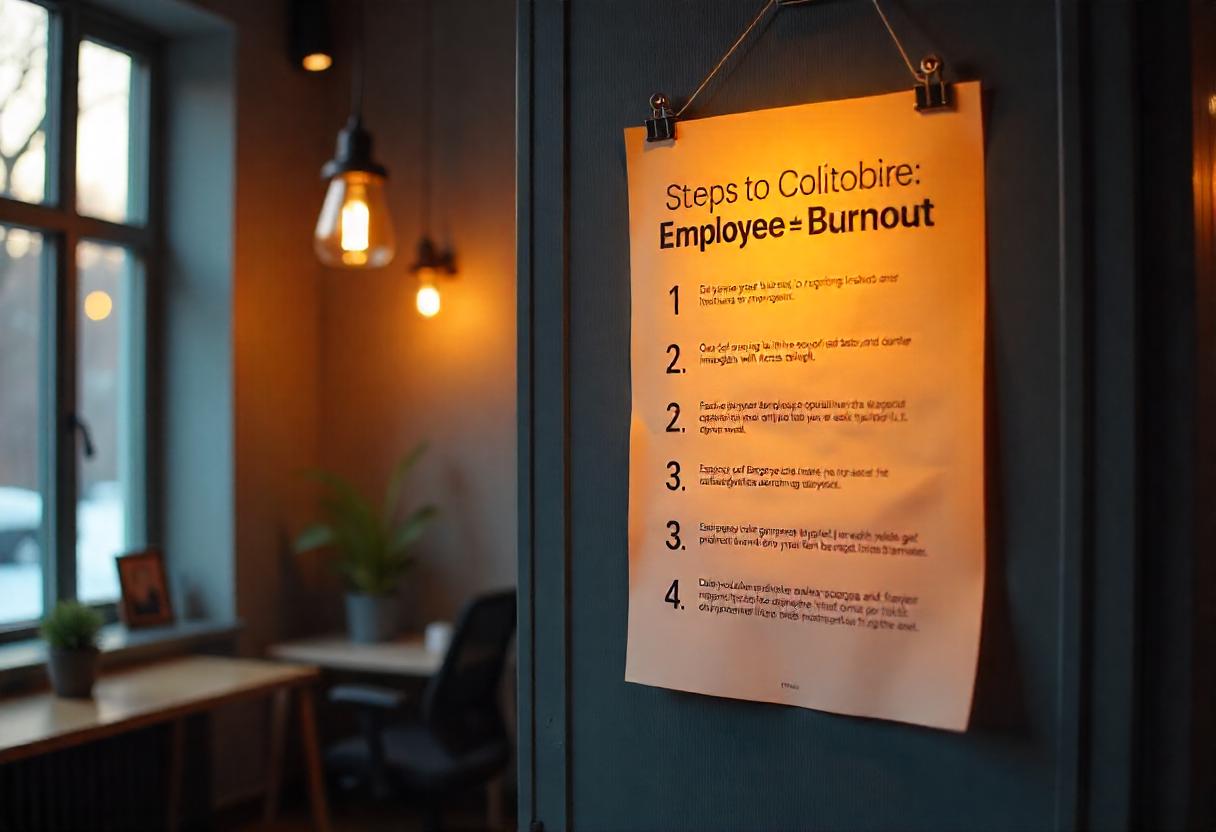Employee burnout is a growing concern in today’s fast-paced, high-demand work environments. Long hours, tight deadlines, and constant pressure can leave even the most committed team members feeling drained and disengaged. As a leader, it’s your responsibility to not only recognize the signs of burnout but also take proactive steps to prevent and address it. A healthy, energized team is the foundation of a successful business.
Here’s a practical guide to help you deal with employee burnout and create a workplace where people can thrive.
Understand What Burnout Really Is
Burnout isn’t just about being tired. It’s a state of emotional, mental, and physical exhaustion caused by prolonged stress. Employees experiencing burnout may feel overwhelmed, unmotivated, or disconnected from their work.
Common signs of burnout include:
-
Constant fatigue or lack of energy
-
Drop in performance or productivity
-
Irritability or mood swings
-
Increased absenteeism
-
Loss of enthusiasm or engagement
Recognizing these signs early allows leaders to step in before burnout leads to serious consequences like turnover, low morale, or even health problems.
Create a Culture That Encourages Balance
The best way to deal with burnout is to prevent it from happening in the first place. Leaders can promote a healthy work-life balance by encouraging reasonable work hours, discouraging after-hours emails, and respecting personal time.
Let your team know it’s okay to take breaks, use vacation days, and disconnect when needed. By modeling this behavior yourself, you show that rest is not a weakness—it’s essential for sustained performance.
Set Clear Expectations
Ambiguity and unrealistic expectations are major sources of stress. Make sure every team member understands their role, responsibilities, and what success looks like. When goals are clear and achievable, people feel more confident and in control.

Avoid last-minute changes, unrealistic deadlines, or overloading employees with too many tasks. If priorities shift, communicate openly and offer support to help manage the transition.
Encourage Open Communication
Create an environment where your team feels safe to speak up about stress, workload, or personal challenges. Regular check-ins can help you spot early signs of burnout and address issues before they escalate.
Ask questions like:
-
How are you feeling about your workload?
-
Is there anything you need help with?
-
What can I do to support you better?
Listening without judgment and responding with empathy builds trust and shows your team that their well-being matters.
Provide Flexibility When Possible
Flexibility can make a big difference in reducing stress. Consider offering options like remote work, flexible hours, or adjusted deadlines when feasible. Giving employees some control over their schedule can help them better manage their energy and responsibilities.
Even small accommodations—like a quiet work environment or the ability to shift tasks—can go a long way in preventing burnout.
Recognize and Appreciate Effort
Lack of recognition is a common cause of burnout. When people feel like their hard work goes unnoticed, motivation can quickly fade. Make it a habit to celebrate wins, thank your team for their efforts, and acknowledge progress.
A simple “great job” or “thank you for your dedication” can boost morale and help your team feel valued. Recognition doesn’t always have to be public or formal—it just needs to be sincere and consistent.
Encourage Growth and Development
Burnout often happens when employees feel stuck or unchallenged. Give your team opportunities to learn new skills, take on new responsibilities, or pursue career development.
Offer training, mentorship, or new projects that align with their strengths and interests. Investing in their growth shows that you care about their future and helps keep them engaged and motivated.
Monitor Workloads and Distribute Tasks Fairly
Keep an eye on how work is distributed across your team. If a few employees are consistently overloaded while others have lighter workloads, it can create resentment and burnout.
Regularly review task assignments and check in with individuals to ensure workloads are manageable. Encourage teamwork and support one another during busy periods.
Lead by Example
Your actions as a leader set the tone for the entire workplace. If you constantly work overtime, skip breaks, or avoid taking time off, your team will feel pressured to do the same. Practice healthy work habits and show that taking care of yourself is a strength, not a flaw.
When leaders prioritize well-being, the rest of the team is more likely to follow.
Conclusion
Burnout is a real and serious challenge, but it’s also something you can manage and prevent with the right leadership approach. By creating a supportive, balanced, and communicative workplace, you can help your team stay energized, motivated, and resilient. Remember, a successful business starts with people who feel good about the work they do and the environment they’re in. Take care of your team, and they’ll take care of the mission.



